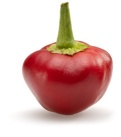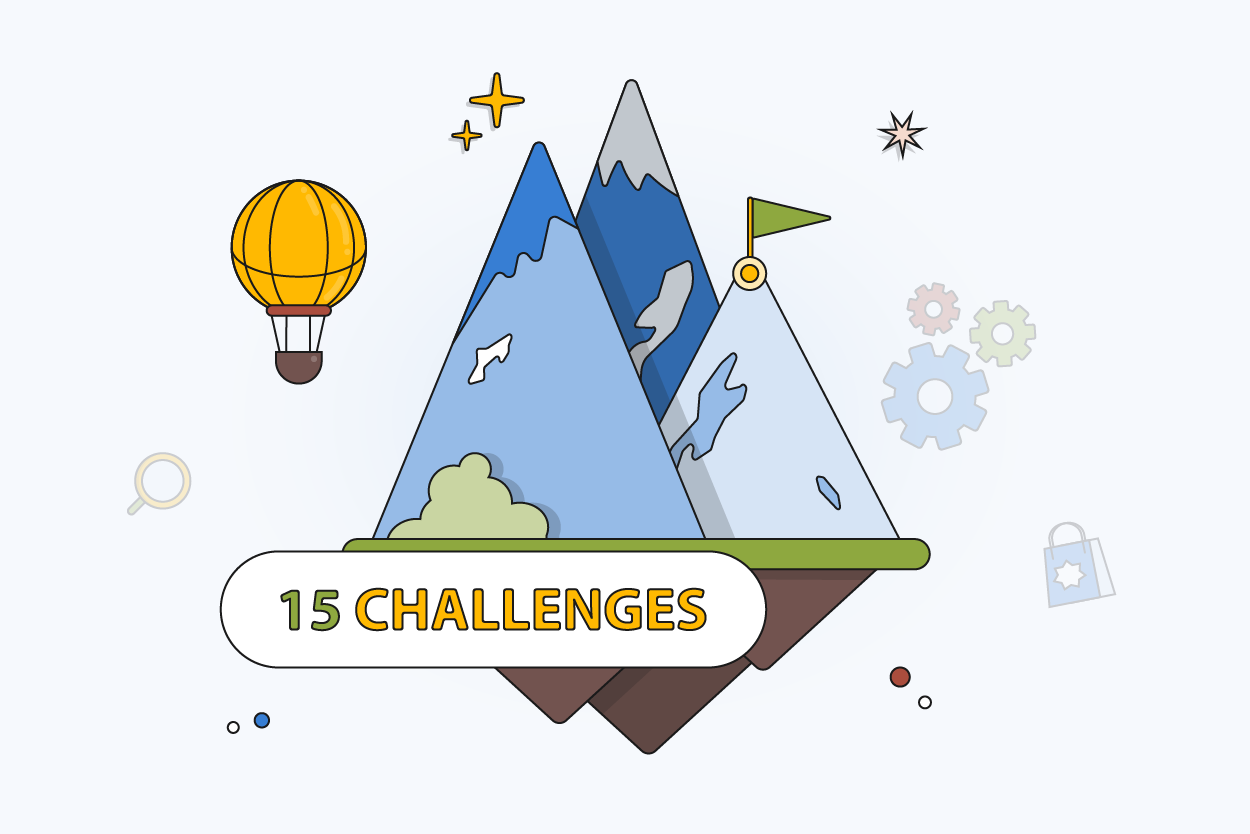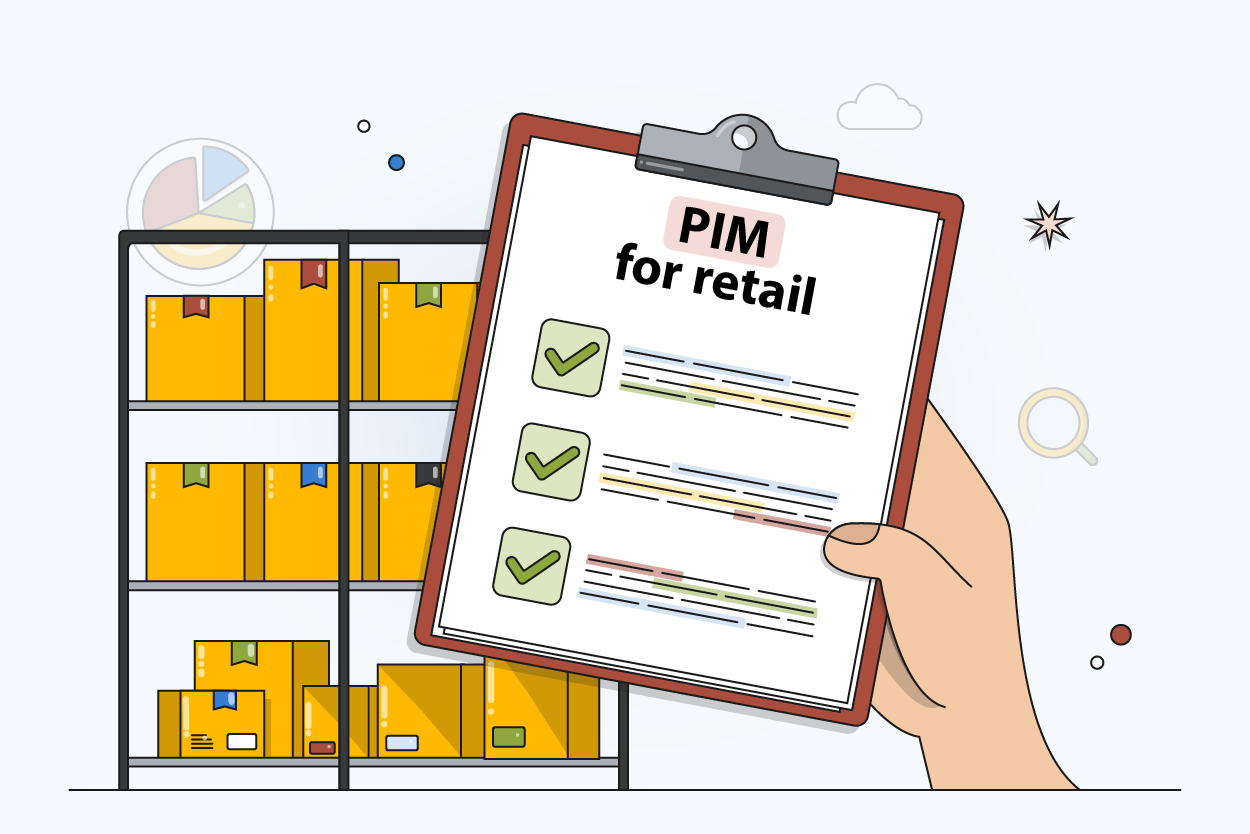Discover how Product Information Management (PIM) can transform your data workflow and drive business efficiency.
What is Product Information Management (PIM)?
Product Information Management (PIM) is a process that consolidates, normalizes, and streamlines product data so it's always correct across all sales and marketing channels. PIM reduces duplication, enhances the validity of the data, and maximizes workflow effectiveness, especially for businesses that sell online.
In the following sections, we’ll explore why PIM is essential, who it benefits, and how PIMinto’s user-friendly PIM can improve your business's operations.

What is a Product Information Management System?
A PIM system is a software program that collects, structures, and disseminates product information from a single, centralized source. It provides accurate, up-to-date information to eCommerce websites, marketplaces, and other points of sale. PIM systems integrate with enterprise resource planning (ERP) and other tools to streamline workflows, reduce errors, and simplify product data updates. PIM is used by businesses to achieve consistency, improve collaboration, and accelerate time-to-market for new products. It is essential for high-product catalog manufacturing, retail, and eCommerce companies that need to deliver accurate information via numerous touchpoints.
How Does PIM Work?
In simple terms, PIM works by managing data. With product information management, you can gather, centralize, enrich, and distribute data related to the products that you sell. This functionality supports any type of information, from banners and reviews to pricing and product descriptions.
PIMinto lets you effectively track and process the following data:
- Basic data: Universal product codes, article numbers, titles, etc.
- Assets: Images and video files that help clients understand what exactly they are buying.
- Technical information: Product’s size, color, length, volume, material, etc.
- Marketing information: Major keywords, descriptions, Google categories, etc.
- Sales information: Store pricing data, latest reviews, and testimonials that can be used for promotion.
- Localized information: Information tailored to the region you operate in. It could be regional currency system data.
- Design information: Information about how the product is displayed and how it fits with your business's branding.
- Taxonomy: Variations of the catalogs, connections between them, and core categories for the company’s structure.
The PIM system becomes a single source of truth, allowing you to simplify your communication and ensure that you publish updated data on the right platforms at the right time. There are two main types of product information management systems:
- SaaS PIM: Software is created and maintained by a third-party provider (like PIMinto), which means you can’t change the code. Such software requires a license or subscription payment to use. However, it saves you from needing a development team.
- Open-source PIM: In contrast to SaaS PIM software, you have full access to the code. So, you can add new features and change any existing options.
PIM vs ERP vs MDM: Which System Do You Need?
Many businesses struggle to understand the difference between PIM, ERP, and MDM systems. Get clarity on which solution fits your needs.

What does PIM Stand For?
Product information management (PIM) is generally a subcategory of master data management (MDM). It offers great scalability and can be integrated with any legacy software through flexible APIs, making it the go-to solution.
| Aspect | Definition |
|---|---|
| Definition | Centralized management of product data for accuracy and consistency across channels. |
| Purpose | To ensure accurate, consistent, and up-to-date product information across multiple platforms. |
| Key features | Centralized Database, Data Quality Management, Multi-Channel Publishing, Digital Asset Management, Workflow Management, Integration Capabilities, Localization and Translation |
| Benefits | Improved Data Accuracy, Enhanced Efficiency, Better Customer Experience, Faster Time-to-Market, Increased Sales, Compliance and Risk Management |
What is PIM Good For?
Before implementing a new approach or technology, it’s essential to understand its potential benefits. First and foremost, PIM allows businesses to escape common issues related to data management. It makes it easy to create high-quality content and distribute it seamlessly across all channels.
PIM is good for data centralization. The system helps simplify the process and reduce data isolation, establishes workflow management, and makes the integration process less problematic. This means that connecting with eCommerce platforms or ERP will be much easier.
Another benefit of using PIM is its ability to process data with superior quality. When you deal with gigabytes of data and have to deliver it fast, you’ll have a tool that keeps you away from human errors
Lastly, another area where PIM excels is a shorter time to market. The more stock-keeping units (SKUs) you have, the more problematic it is to process, maintain, and deliver them to needed channels. With PIM, the time to input, verify, and enrich products is much shorter.

What Is the Function of PIM?
As a database application, PIMinto’s PIM has these core functions:

Data Collection
Import, map, and transform through the selected channel.

Consolidate and Rationalize Data
Organize and simplify product information for consistency across all platforms.

Enrich Descriptions
Add clear, engaging product details to boost appeal and accuracy.

Disseminate Data
Sync product data across channels in real time with a robust API.
Key PIM Features
Besides these key functions, here are additional capabilities of PIMInto’s product information management systems.


Unlimited Channels
PIM software supports unlimited product channels, allowing users to store and present the same product information in different formats, including multiple languages. This is essential when you work in multinational teams and share your products around the world.

Brand Portals
Brand portals help growing companies manage and share product information efficiently. They provide a centralized platform where businesses can distribute accurate product data, images, and marketing materials to retailers and partners. This simplifies eCommerce setup and ensures consistency across sales channels without requiring a large budget.

PIM Views
A PIM system offers multiple views to help users manage product data efficiently. These views allow teams to organize, edit, and analyze product information in ways that best suit their workflow

Product Categories
Product categories help structure and organize product data. They make it easier for different teams to access relevant information. Marketing teams, IT specialists, and other departments can quickly find the data they need without sifting through unrelated details.

Product Variants
With PIM solutions, you can see several versions of one product. This option allows you to share common characteristics (size, material, colors, season, etc.). You can easily switch between versions to display different variants and product attributes.

Product Relationships
With product information management, you can build connections by making different types of associations (for example, recommended products). When you work with product data, relationships will help you see items with similar characteristics, descriptions, or other matches.

Product Data Transform
Product data often comes in complex formats such as markup text, pre-defined fields, and multi-dimensional pivot tables. PIM systems can transform this data into a structured, standardized format that is easier to manage and distribute.
Who Uses PIM?
Depending on your company's organizational structure, PIM may be used by different departments. While it benefits the entire company, let’s look at the core roles that rely on PIM.

ECommerce Managers
ECommerce managers use PIM to send accurate product listings to syndication platforms without the need for manual verification. Since PIM solutions offer auto-check features, they deliver a superior customer experience without spending much time.

Creators
Content writers, photographers, designers, search engine optimization specialists extract product details from the PIM system. Since data is well-structured, individuals don’t need to waste time searching for it.

Product Managers
Product managers rely on PIM to maintain accurate product information throughout its lifecycle. When data changes, PIM automatically updates it across all channels, eliminating the need for manual communication with the marketing team.

IT Department
PIM simplifies the IT department's work by automating routine tasks, allowing focus for higher-priority operations. Additionally, data is regularly backed up, creating safe and reliable management of product information.

Chief Officers
Today, digital presence is an essential component of any business. Regardless of what you do (distribute, sell, or manufacture), you have to maximize your presence on all related platforms while maintaining the quality of product data and digital assets. This is where PIM solutions are invaluable.

Ready to Choose a PIM System?
With so many PIM solutions available, selecting the right one can be overwhelming. Our comprehensive guide breaks down the 15 most critical criteria to evaluate.
Why Is PIM Needed?
PIM simplifies product data management, reducing manual tasks and preventing data inconsistencies. This allows teams to focus on higher-value activities, improving efficiency and reducing stress.


To Reduce Pressure on the Employees
Constantly monitoring and managing product data can overwhelm employees. If teams spend hours on manual updates, it signals a breakdown in data management. As the number of products grows, even experienced specialists may struggle to keep up. Implementing a PIM system prevents this issue by automating processes and ensuring smooth operations.

To Help Analytics Avoid Repeatable Mistakes
Data accuracy directly impacts decision-making processes. If something is wrong with the information (for example, it was not updated on time), it may lead to poor decisions. Data analytics must receive only accurate data, and the best way to do it is to implement PIM solutions.

To Frequently Make Changes to Product Data
Changes like size updates or other adjustments need to be made quickly to maintain accuracy. Inconsistent information can lead to order cancellations when customers notice discrepancies between descriptions and visuals. Consider using PIM for frequent updates.

To Reduce Time-To-Market
Automating product data management speeds up the entire process of launching new products. With a PIM system, updates, approvals, and distribution happen faster, reducing time-to-market with less effort. Even when following strict requirements, preparation becomes more efficient. Faster operations lead to quicker sales and increased revenue potential.

To Improve ROI by Cutting the Cost
PIM solutions automate workflows and improve the performance of the whole organization. When you remove repeatable tasks and reorganize your processes, you should expect an increase in ROI.
Is Your Business Ready for PIM?
Take our 2-minute assessment and get personalized recommendations
-
Analyze your current product data challenges
Get instant recommendations based on your business profile
See which PIMinto plan fits your needs
Learn if PIM will solve your specific problems
Benefits of a PIM Solution
PIM systems simplify the management of product data. This leads to savings in both time and money while reducing the effort spent maintaining accurate, up-to-date information.


Saving Your Time, Money, and Effort
PIM can save companies considerable sums. With good information management, you also avoid excess effort, reducing the time needed to complete tasks. Everything is stored in one place, so any specialist can find data in seconds.

Increasing the Quality of Product Information
Product information management gives you powerful tools to edit, organize, and optimize data in catalogs of any size. If you are worrying about handling information from multiple sources, leave it to PIM to simplify the process.

Rapid Data Sharing
When working with data, you must share it with retailers, partners, sales specialists, and other recipients. PIM technology makes it easier to share everything, thanks to quick data exports. The information on catalogs and sales channels can be updated automatically.

Strong Presence on Multiple Channels
You need a strong presence wherever customers are shopping. However, each channel has its own rules and requirements, making manual updates time-consuming and error-prone. PIM simplifies this process by automating data management and meeting compliance standards for each platform. It also allows businesses to easily adjust product information as needed to create a great shopping experience for customers.

Improved Marketing
Successful marketing campaigns depend on well-organized and accurate product information. PIM enables businesses to go beyond basic selling by supporting upselling and cross-selling strategies. Moreover, modern PIM tools allow you to change the design of the catalogs and sales, making your marketing campaigns more effective.
The Role of a Properly Implemented PIM Strategy
A properly implemented PIM strategy will be advantageous for your business. With a well-balanced strategy, you no longer struggle with inaccurate product content that can disorientate customers. With high-quality product listings delivered on time, you can ensure success across channels. Major companies worldwide have already seen changes after implementing product information management.
Additionally, a well-balanced product information management strategy brings positive changes to digital assets management (DAM). Now, when dealing with images and videos related to SKUs, you can easily manage and connect them to the needed descriptions. When using product information management, you can significantly improve performance by implementing the following steps:
- Focus on improving the overall quality and reliability of the dataset inside your company.
- Use specifically designed tools to work with complex data management tasks.
- Collaborate with your team to identify gaps, set clear goals, and establish sound processes for data management.

Real PIM Use Case
Comparing PIM to Other Data Management Tools
PIM is typically compared with other systems for managing data like Product Data Management (PDM), Master Data Management (MDM), and Digital Asset Management (DAM). While these applications are related, they perform distinct roles in managing and organizing business data.

PDM
PDM is used primarily in manufacturing and engineering for product design data, specifications, and managing the product lifecycle.

MDM
MDM is typically an enterprise system that manages and standardizes all the most important business information, including customer, supplier, and financial data.

DAM
DAM systems manage digital assets like images, videos, and brand assets.
PIM is a subset of MDM and is employed to optimize and syndicate product data. While PIM integrates with DAM to link media files to product data, DAM lacks the product data management and syndication capabilities of PIM. All these systems play a role in data governance, but PIM targets specifically centralizing, enriching, and distributing product data effectively to marketing and sales channels.
The Role of PIM in Multichannel Strategies
A well-implemented PIM system is essential for businesses that sell their products through multiple sales channels, including eCommerce websites, marketplaces, social media, and physical stores. No matter what channels users engage with your business, PIM assists in delivering a consistent shopping experience by keeping product information synchronized. One product database ensures that valid and updated data is displayed on every sales channel. Plus, PIM lets you customize data for each channel’s specifications.
PIM Implementation Steps and Technical Requirements
A successful PIM implementation starts with clearly defined business objectives and analysis of current issues like fragmented data, inconsistencies, or inefficient updates. Companies migrating from spreadsheets, legacy ERPs, or bespoke databases need to clean and normalize data before migrating to prevent mistakes. Real-time integration with eCommerce platforms, ERP, and DAM systems facilitates efficient synchronization of data.
User adoption is essential to maximizing the advantages of PIM. Product data, marketing, and eCommerce teams need training in new workflows, while IT teams are responsible for system administration and API configurations. A structured onboarding process enables efficient use of PIM, improving data accuracy and overall value.
When is the Right Time to Invest in a PIM System
There is no wrong time to invest in PIM solutions. In most cases, clients understand that the time to invest in PIM is when multiple issues arise. For example, customers start making order returns due to incorrect information, or sales conversions fall due to poor product data enrichment. When this happens, it means you have to change the approach to managing your data and implement a new strategy.
How to Choose a PIM system?
To choose a good product information management system, you need to understand who will be using it, how many users will work with the tool, and what skills they possess. Depending on how skillful your colleagues are, you’ll have to set training sessions and practice. This will help you build confidence and overcome any challenges. With the right support, PIM can be successfully integrated into your workflow to improve product data management.
Try the Really Fast PIM from PIMinto
Start with our free plan to experience all the benefits of PIMinto.
Blogs & Views

Product Descriptions Optimization: 7 Proven Strategies for eCommerce Success
Every word on your product page matters. The right description attracts search traffic, builds trust, and drives sales. Wheth...

15 Challenges for eCommerce in 2025
Running an online store in 2025 is exciting and stressful. Ecommerce has evolved to be one of the leading industries globally...

The Complete Guide to PIM for Retail: Transform Your Product Management
Product data drives retail. Every product in your inventory has names, prices, specs, images, videos, and more. Multiply that...

What is Product Data Management?
Every product has a story to tell before it reaches a customer. An idea sparks, teams draft designs, build prototypes, and re...



